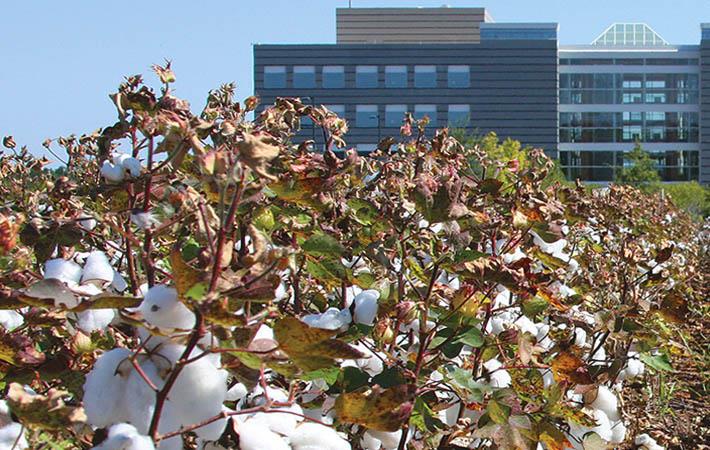Scientists at the HudsonAlpha Institute for Biotechnology have initiated a project to send cotton to space. Cultivating cotton in zero gravity might alter the genetics or epigenetics of transformation. It is difficult to introduce new traits into cotton because the adoption is slow. Through the project, scientists intend to find out faster transforming plants.
The work is being carried out by the HudsonAlpha Genome Sequencing Centre. The idea is that cultivating cotton in zero gravity might alter the genetics or epigenetics of transformation in a visible way, giving scientists a target when compared to cotton cultivated on earth.Scientists at the HudsonAlpha Institute for Biotechnology have initiated a project to send cotton to space. Cultivating cotton in zero gravity might alter the genetics or epigenetics of transformation. It is difficult to introduce new traits into cotton because the adoption is slow.Through the project, scientists intend to find out faster transforming plant.#
The HGSC provides high quality whole genome sequencing and analysis in agriculture, having created more than half of all the high-quality reference genomes currently in circulation. Now the project team, led by Jeremy Schmutz, will sequence both the earth-grown samples and the samples that return from space, searching for differences on the genetic level. The effort is part of a collaboration with Christopher A Saski, of Clemson University, funded by Target and the Centre for the Advancement of Science in Space (CASIS).
However, it’s not the only cotton-based project on the radar for the HGSC. Schmutz is also heading a project funded by Cotton Incorporated that will compare elite cotton lines with a historical one. Breeders develop “elite lines” that they use as the basis for their crops, often because they are well adapted to the climate they’re grown in, particularly disease resistant or have some desirable traits. By comparing elite lines to a historical cotton reference genome, researchers hope to unveil the parts of the cotton genome that make the elite lines so desirable, making them easier to replicate and improve.
Sequencing these cotton genomes creates a new starting point for future cotton research. However, as part of the project that will send cotton into space, HudsonAlpha will also lead a number of educational efforts to help reel in the next generation of scientists that may pioneer their own research in agriculture.
Vice president of Educational Outreach Neil Lamb will lead a student experience for a diverse group of students from local high schools. The Educational Outreach team will cover the basics of epigenetics, information about cotton and the specific details of the research project.
Students will have an opportunity to ask questions of researchers from both HudsonAlpha and Clemson. HudsonAlpha is also working with NASA to explore the possibility of linking students with astronauts on the ISS for a conversation about how the experiments are carried out in space. Starting in Summer 2021, HudsonAlpha will incorporate an activity based on the experiments into its three-week Genes and Greens agrigenomics academy for high school juniors and seniors.
All this genomics research could result in stronger fibres, greater drought resistance or less water consumption.
Fibre2Fashion News Desk (SV)
